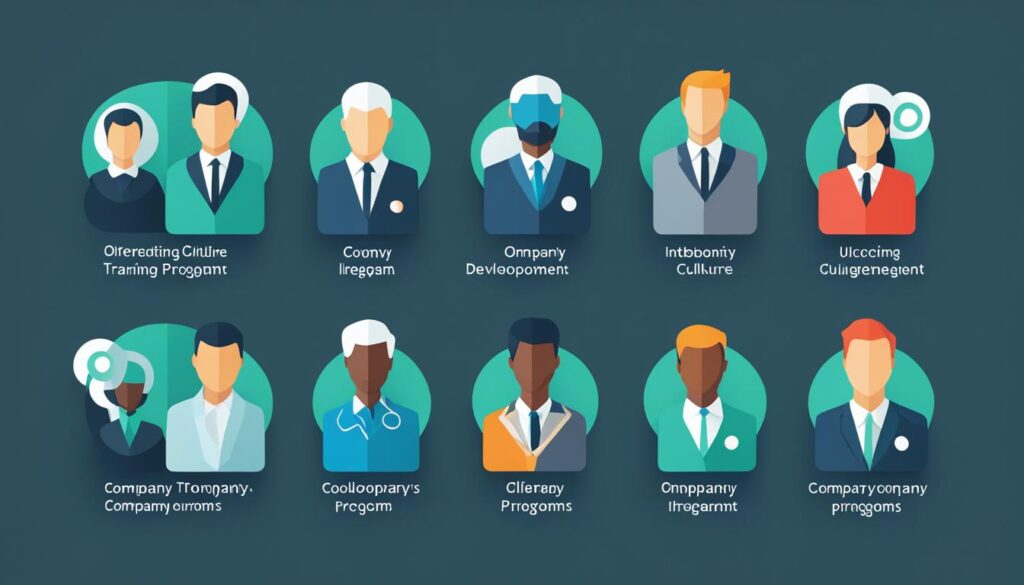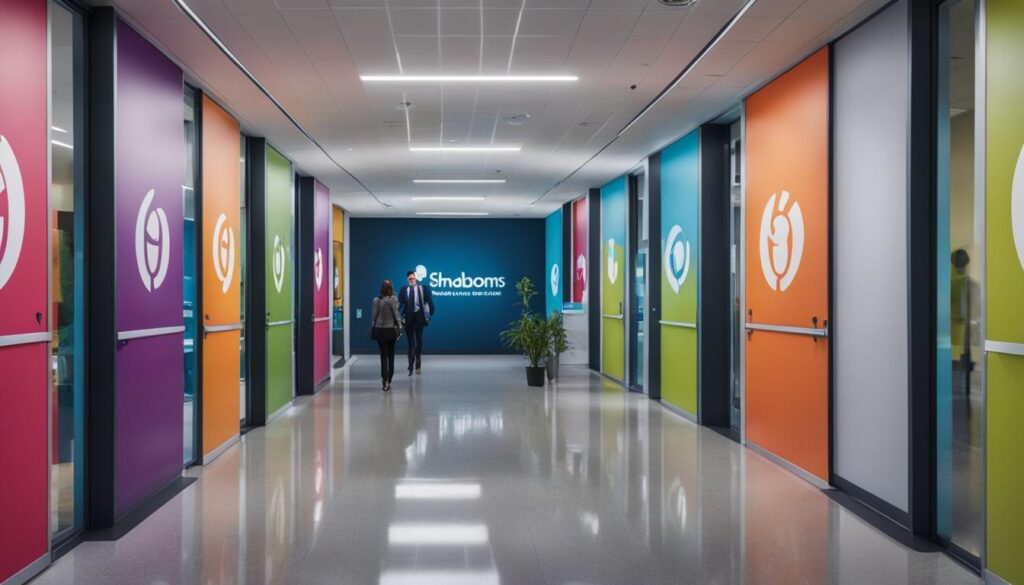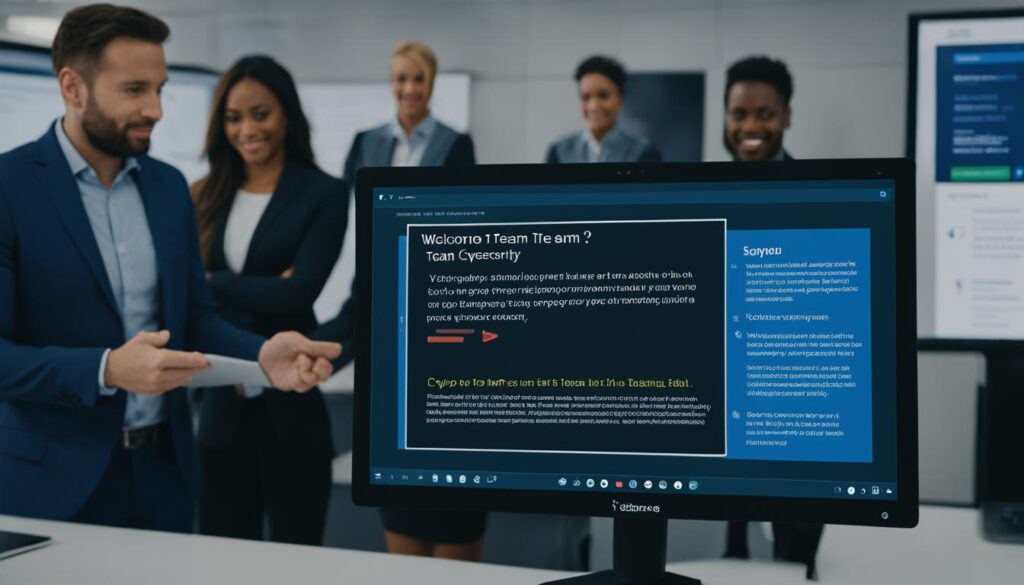Welcome to the exciting world of employee onboarding! As you embark on this journey of integrating new hires into your company, it’s crucial to have effective onboarding methods in place. By doing so, you can ensure a successful onboarding process that sets your new hires up for long-term success.
Employee onboarding techniques play a vital role in creating a positive employee experience and reducing turnover. It’s not just about filling out paperwork and attending orientations; it’s about making your new hires feel welcomed, supported, and confident in their roles. Through effective onboarding, you can shape a cohesive company culture, boost productivity, and inspire loyalty among your employees.
In this article, we will explore various best onboarding strategies and successful onboarding processes. From comprehensive HR orientations to assigning mentors and establishing clear goals, we will delve into the key components that make a difference in the onboarding journey. Additionally, we’ll showcase unique onboarding methods that enhance the overall experience and foster a sense of belonging.
Now, let’s dive in and uncover the secrets to effective employee onboarding!
Key Takeaways:
- Effective onboarding methods are crucial for the success of your new hires and your company as a whole.
- Employee onboarding techniques help create a positive employee experience and reduce turnover.
- Key components of onboarding include HR orientation, office tours, job essentials, mentors, and goal-setting.
- Unique onboarding methods such as personalized welcome videos, care packages, and social media features can enhance the onboarding experience.
- Continuously seeking feedback and improvement is essential for ongoing success in onboarding.
Importance of Employee Onboarding
Employee onboarding is a critical process that sets the tone for new hires’ experience in your organization. It plays a crucial role in helping new hires feel welcomed, understand their role and responsibilities, and get acquainted with the company culture. Effective onboarding programs have been proven to increase retention rates and boost productivity, making them essential for the long-term success of your team.
To ensure a successful onboarding process, it is important to follow best practices and implement proven techniques. One of the key aspects is providing a comprehensive orientation that covers all the necessary information new hires need to hit the ground running. This includes introducing them to company policies, procedures, and resources, as well as familiarizing them with their work environment and tools. A well-structured orientation helps new hires feel supported and prepared for their new role.
Assigning mentors to new hires is another effective technique for employee onboarding. Mentors provide guidance, answer questions, and offer valuable insights into the organization’s culture and dynamics. This personalized support enables new hires to build connections, navigate their new workplace, and quickly acclimate to their roles and responsibilities.
Establishing clear goals during the onboarding process is also crucial. Clearly communicating expectations and objectives helps new hires understand what is expected of them and sets them up for success. Providing a roadmap with achievable milestones allows new hires to track their progress and contribute meaningfully to the organization from the start.

Key Components of Onboarding
When it comes to effective employee onboarding, covering key components is essential to ensure a comprehensive and successful process. By incorporating these components into your onboarding program, you can set new hires up for success right from the start.
- HR Orientation: During the HR orientation, new hires receive necessary paperwork and learn about the company’s culture and values. This step provides them with the essential information they need to understand the organization’s expectations and work environment.
- Tour of the Office: Familiarizing new hires with their new work environment through a guided tour of the office is crucial. This helps them find their way around the workplace and introduces them to key employees, fostering a sense of belonging and connection.
- Job Basics: Going over the basics of the job is crucial for new hires to understand their role and responsibilities. This includes familiarizing them with the software programs they’ll be using, providing an overview of the company structure, and clarifying any questions they may have.
- Mentorship: Connecting new hires with mentors can significantly contribute to their onboarding experience. Mentors provide guidance, support, and assistance, helping new employees navigate their roles and the organization more effectively.
- Establishing Goals: Setting clear goals and expectations for new hires is vital in ensuring their success. By establishing realistic goals, you can provide them with a clear path forward and help them understand how their work contributes to the larger organizational objectives.
By incorporating these key components into your onboarding process, you can create a comprehensive and effective employee onboarding experience that sets your new hires up for success.
Unique Onboarding Methods
When it comes to onboarding new hires, there are various unique techniques that organizations can implement to enhance the onboarding experience. These methods go beyond the traditional onboarding checklist and can help make new hires feel valued, welcome, and connected to the company from day one.

Personalized Welcome Videos
A personalized welcome video is a great way to make new hires feel special and appreciated. By sending a video message from key team members, such as the CEO or the hiring manager, you can provide a warm introduction and set a positive tone for their onboarding journey.
Care Packages
Send new hires a care package before their first day on the job. Include branded items, such as a company t-shirt or a notebook, along with some snacks and a handwritten welcome note. This thoughtful gesture will show new hires that you are excited to have them on board and that you value their contribution.
Social Media Features
Incorporate social media into the onboarding process by creating a private group or channel where new hires can interact with their colleagues. This platform can be used to introduce new hires, share important information, and encourage networking and collaboration.
Onboarding Wellness Challenges
Promote employee health and well-being by organizing onboarding wellness challenges. This could include activities like step competitions, virtual yoga sessions, or healthy recipe exchanges. Not only will these challenges create a sense of camaraderie among new hires, but they will also help them acclimate to the company’s wellness initiatives.
Scavenger Hunts
Add an element of fun and adventure to the onboarding process by organizing scavenger hunts. This can be done virtually or in-person, depending on your company’s setup. Scavenger hunts not only encourage new hires to explore their new workplace but also enable them to build relationships with their teammates along the way.
In-person Introductions and Tea/Coffee Dates
Facilitate connections between new hires and existing employees by organizing in-person introductions or informal tea/coffee dates. These casual settings allow new hires to interact with their colleagues in a more relaxed environment and foster a sense of belonging within the team.
Collecting Feedback
Throughout the onboarding process, it’s essential to collect feedback from new hires to identify areas of improvement and address any concerns they may have. Show new employees that their opinions matter by actively seeking their input and taking action on their suggestions.
By incorporating these unique onboarding methods into your onboarding programs, you can create a memorable and engaging experience for new hires. Remember, a successful onboarding process sets the foundation for long-term employee satisfaction and productivity.
Conclusion
Implementing effective onboarding methods is crucial for integrating new hires into your company culture and ensuring their success. By following the key components of onboarding and exploring unique onboarding methods, you can create a comprehensive and engaging onboarding experience.
Remember that onboarding is an ongoing process, and continuously seeking feedback and improvement will lead to better outcomes for both new hires and your organization. It is essential to regularly evaluate your onboarding process and make necessary adjustments.
By incorporating onboarding best practices, such as providing a thorough orientation, assigning mentors, and establishing clear goals, you can set your new hires up for success from day one. Utilizing an onboarding checklist can help ensure that you cover all the necessary steps and create a consistent onboarding experience for every new hire.
Investing in effective employee onboarding not only benefits your new hires but also contributes to a more productive and engaged workforce. Remember: a successful onboarding process sets the stage for long-term employee satisfaction and organizational success.
FAQ
What are some effective employee onboarding techniques?
Some effective employee onboarding techniques include providing a comprehensive orientation, assigning mentors, establishing clear goals, and conducting regular check-ins.
How does onboarding contribute to the success of new hires?
Onboarding helps new hires gain confidence, reduce turnover, and create a positive employee experience, leading to increased retention rates and productivity.
What are the key components of a successful onboarding process?
The key components of a successful onboarding process include HR orientation, office tours, job basics training, mentorship programs, and goal setting.
What are some unique onboarding methods that can enhance the onboarding experience?
Some unique onboarding methods include personalized welcome videos, care packages, social media features, wellness challenges, scavenger hunts, in-person introductions, and gathering feedback from new hires.
How can organizations improve their onboarding processes?
Organizations can improve their onboarding processes by continuously seeking feedback from new hires, addressing their concerns, and making ongoing improvements based on their input.




